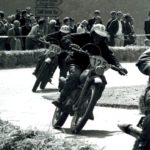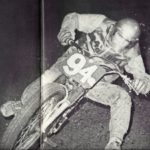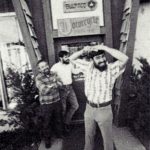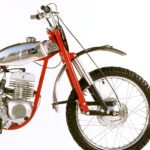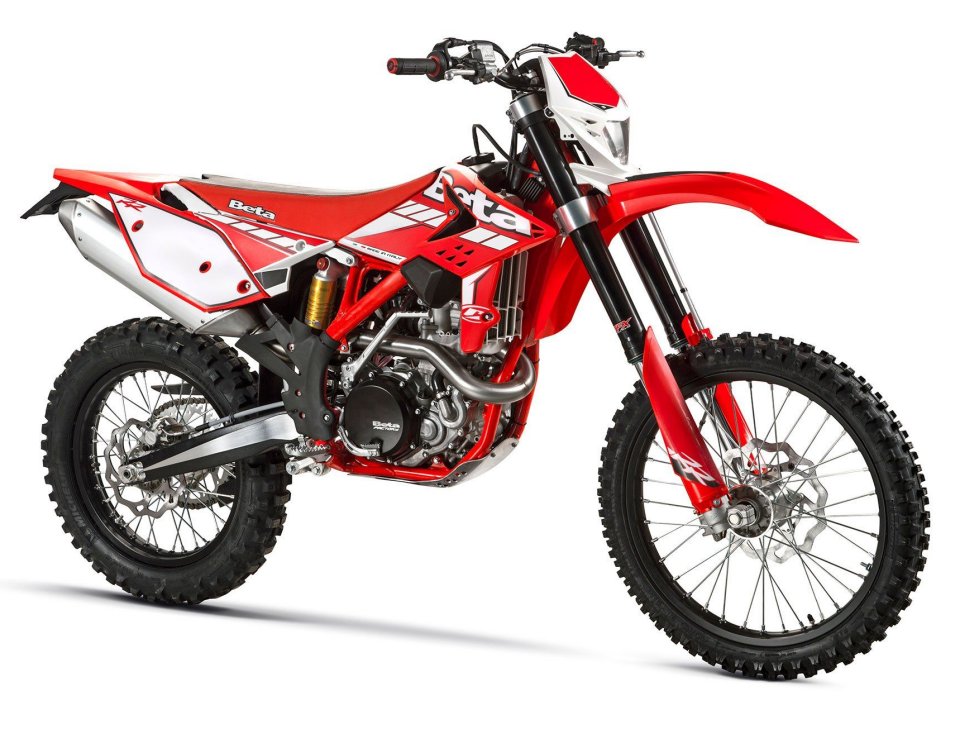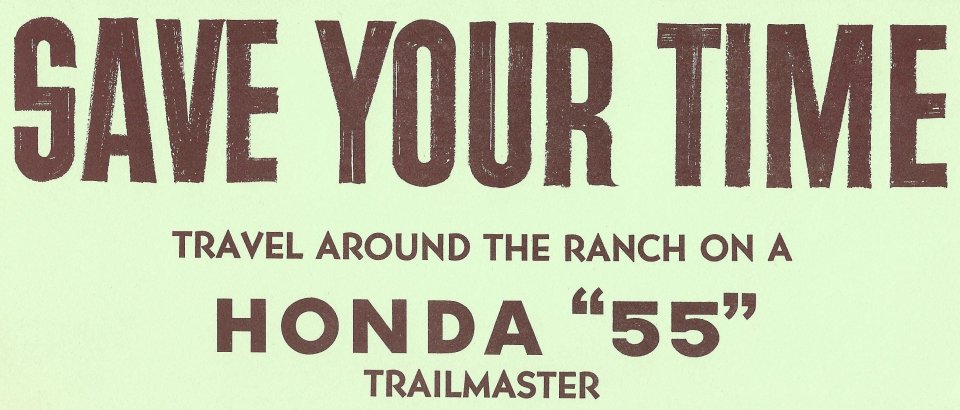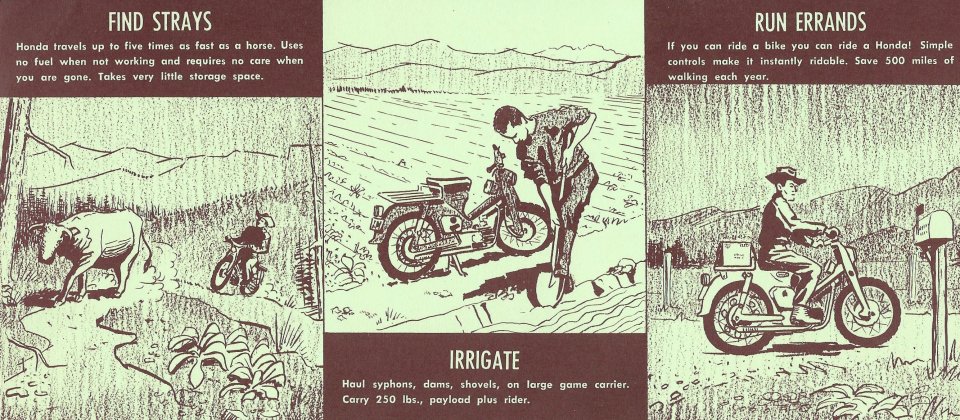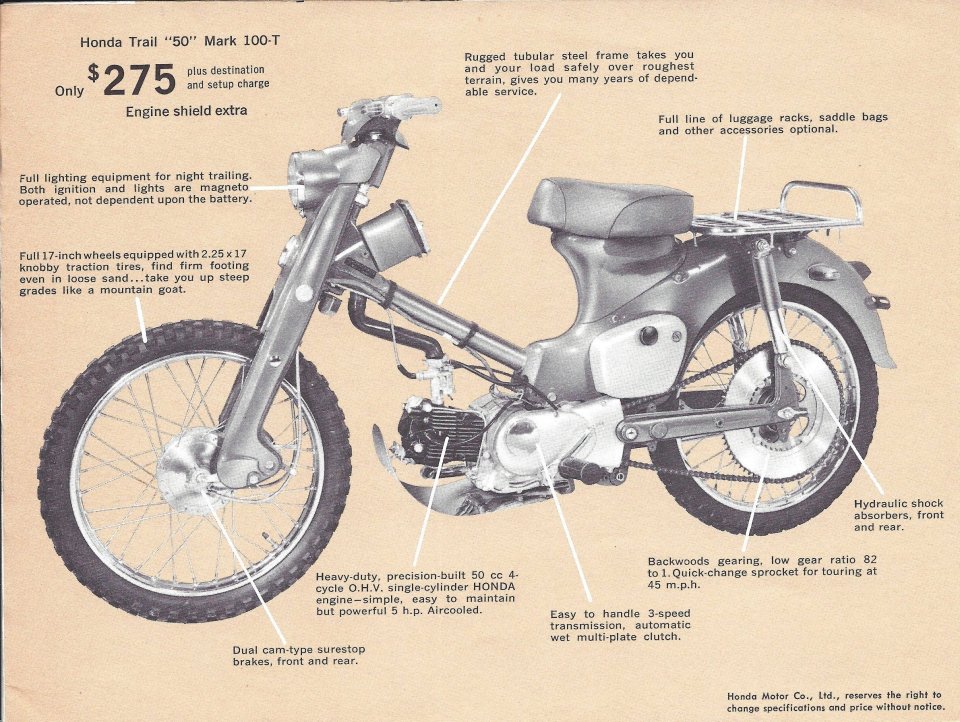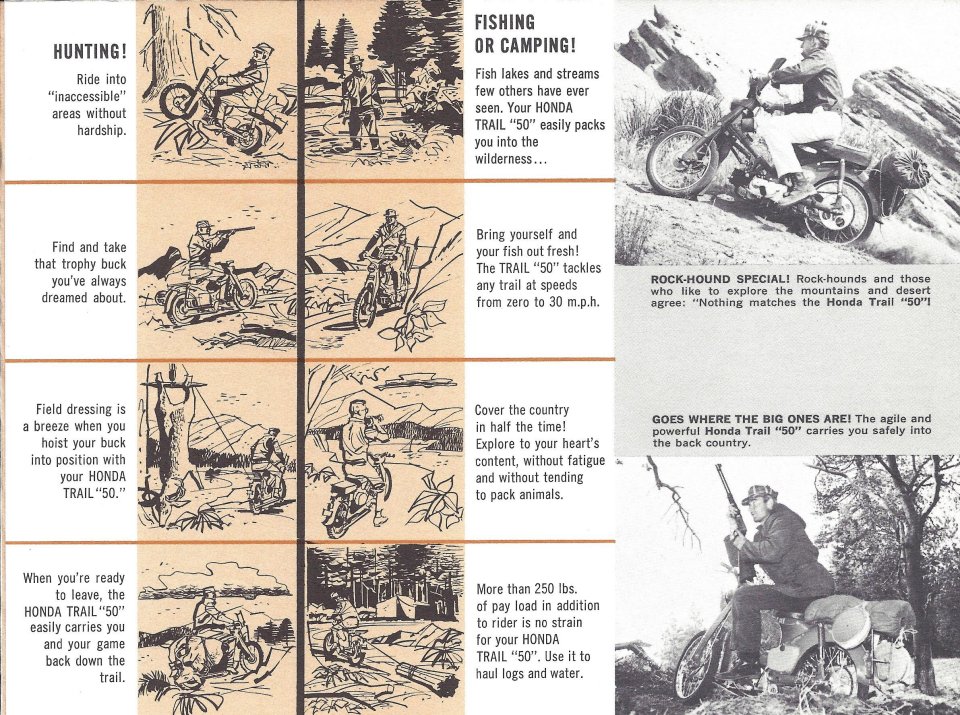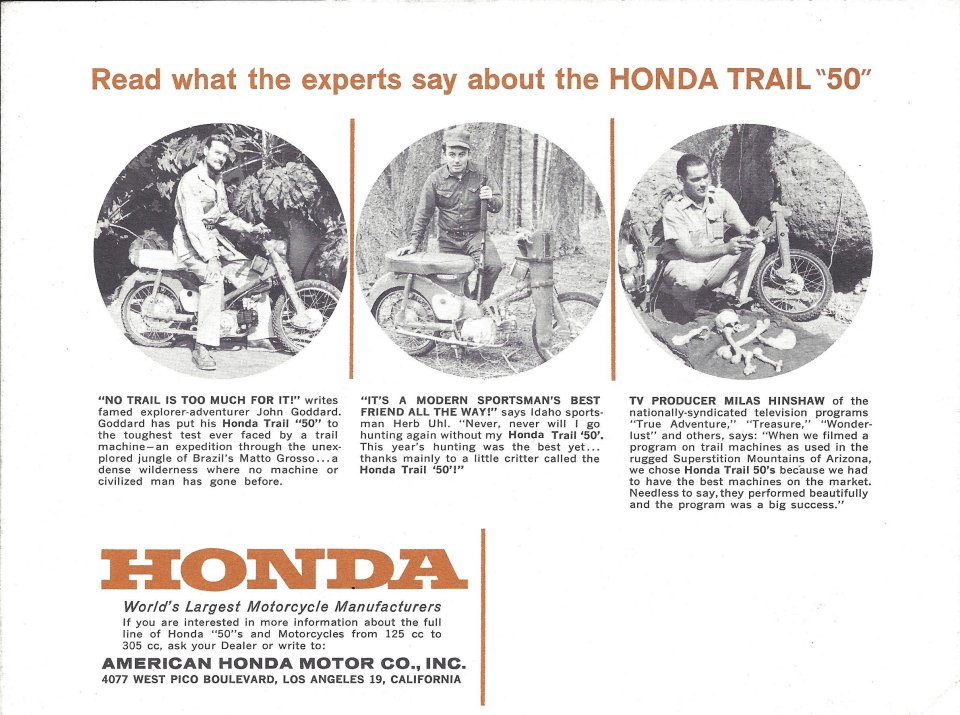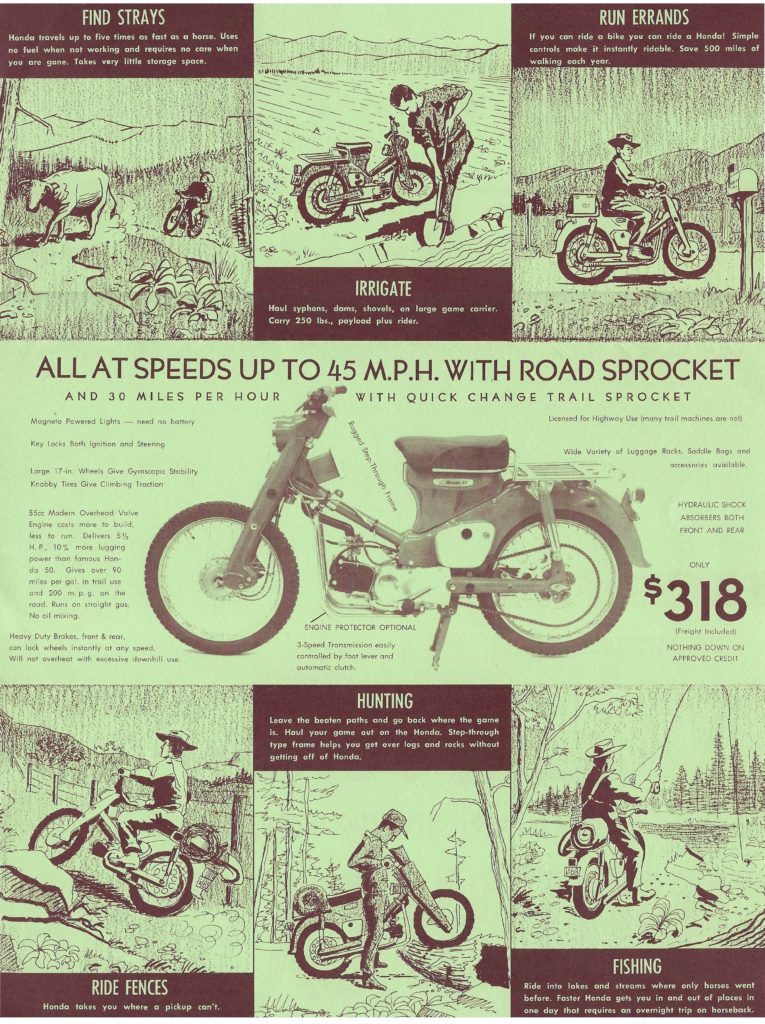Author: taylorevance@gmail.com
Riders’ Average Age: 50’s … Why?
I recently read an article in Motorcycle Consumer News by David L. Hughes where he lamented that the average age of motorcycle riders had moved up into the high-50s when it used to be in the mid-20s.
There are essentially two main factors that have caused this to happen. The first was caused by Honda, with their very vocal insistence that all the manufacturers drop the big selling two-stroke first bikes from their lines and build four- strokes only.
This caused a major problem in the motorcycle sport, while giving the manufacturers an immediate surge of extra profit, because they could get more money for a four stroke and its replacement parts.
This change in what models were available in the marketplace caused three things to happen almost simultaneously to our sport.

![]() Fewer people were able to afford that first play bike, which would set the new riders desire, for more and newer motorcycles
Fewer people were able to afford that first play bike, which would set the new riders desire, for more and newer motorcycles
 When that expensive to repair four stroke broke down, it didn’t get repaired, so the new riders chance to become an enthusiast was cut short.
When that expensive to repair four stroke broke down, it didn’t get repaired, so the new riders chance to become an enthusiast was cut short.
 Motorcycling, as a sport, was proved to be too expensive, so even fewer people bought that first bike.
Motorcycling, as a sport, was proved to be too expensive, so even fewer people bought that first bike.
That’s how the decline started. Simultaneously with those manufacturing decisions, taxes went up drastically and indirectly, by cutting the value of our currency.
 Before this all started, back in the 60s and 70s, I sold hundreds of good solid 250 cc two-stroke first bikes for $695 plus tax out the door. If the buyer did something dumb and forgot about oil, for less than $100 they were up and running again. The development of a crop of new enthusiasts was guaranteed by both economics and fun.
Before this all started, back in the 60s and 70s, I sold hundreds of good solid 250 cc two-stroke first bikes for $695 plus tax out the door. If the buyer did something dumb and forgot about oil, for less than $100 they were up and running again. The development of a crop of new enthusiasts was guaranteed by both economics and fun.
Right now there’s nothing to compare to that, even though the people still have the ability to spend up to about $1000 for a fun bike in the 150 cc to the 250 cc class. So what would that $1000 motorcycle cost them now? My guess is that in today’s currency it would cost somewhere between $7000 and $10,000. It’s really easy to believe that prices have just gone up, when the reality is, that money value has been pushed down, to where things we used to buy for pocket change now cost a bale of money. Lowering the value of money, simply becomes a hidden tax.
So now, it’s not only that they can’t get the bike for the thousand dollars, but when the new rider breaks the more delicate and harder to repair four stroke, it will cost the thousand dollars just to fix it. The net result is the loss of not just that new motorcycle enthusiast but all his buddies who have now had it proven to them that people who buy motorcycles to enjoy are fools.
Can this lack of new “motorcycle enthusiasts” problem be fixed? Certainly but the manufacturers are going to have to take some of that big money they made by following Hondas shortsighted 4-stroke ideology and design some 1970s style 2-stroke 150cc and 250cc play bikes, at a small margin price point, and get the motorcycle enthusiasm started again. Remember it was well on the way when they squelched it by following Honda’s advice and dropping their reasonable to manufacture and repair two-stroke first bikes and going to all four-strokes.
Now it’s up to the manufacturers to combine their engineering talent and design a line of almost generic self-oiling two-stroke beginner bikes and get the motorcycle boom on the move again. It is also important for the different brands to have easily identifiable small differences to give the owners reasons to brag about how much better their brand is than Brand X, while they all have identical internals to keep the cost down.
Bragging about those obvious differences has always been an important part of the enthusiast experience!
For all you folks who don’t understand two-strokes and think more is better, I’ll try to explain why the two-stroke is superior anytime you want efficiency, ease of manufacture, lightweight and reasonable maintenance.
In a two-stroke engine every time the piston moves down in its bore you get one power stroke. (Two strokes, one stroke up and one stroke down.)
In a four- stroke engine every two times the piston moves down in its bore you get one power stroke. (Four strokes, two strokes up and two strokes down.)
Do all of you now understand that in a four stroke engine the piston has to slide up-and-down twice before you get any power, while in a two-stroke it only has to do that once to get your power? So you see, in this case, two really adds up to more than four.
Another thing you may not be aware of about the huge container ship that hauls those crated motorcycles to the US, the ship itself probably has a huge two-stroke engine, because they are more efficient and economical, and its engine may have been built by Kawasaki.
 The pistons are so big in those container ship two-stroke engines you could use them for picnic tables. They give those ships the advantage of better fuel mileage and way lower overall operating costs. Chainsaws also use two-strokes because they are dependable and just plain more energy dense. (More power in the smallest space.)
The pistons are so big in those container ship two-stroke engines you could use them for picnic tables. They give those ships the advantage of better fuel mileage and way lower overall operating costs. Chainsaws also use two-strokes because they are dependable and just plain more energy dense. (More power in the smallest space.)
In motorcycles they have those same advantages along with the fact that they give the bike a lower center of gravity, because there are no heavy cams valves chains etc. high on the engine. Even the carburetor or fuel injections are mounted lower on the two-stroke engine. The two-stroke engine is so simple that most any person can do a complete upper end tear down with zero training in about 20 minutes.
If there are any of you folks who still can’t understand why two- strokes are superior as lightweight motorcycle engines, something else is dense and it’s not energy. There should still be plenty of small four- strokes available to supply the hardheads.
The bottom line is, we need two- stroke play bikes back, if we intend to revitalize the motorcycle industry, and lower the average age of riders again.
~Herb Uhl
We welcome your comments
Motorcycle Comfort and Safety
In designing a motorcycle there are several critical measurements that must first be finalized.
From watching customers decide which bike to buy, over the years, and from my own riding experience, the first and most important measurement to be locked in should be the seat height. After all, these machines should be built to fit people and people come with various inseam lengths, within certain ranges.
Currently, go anywhere all-purpose motorcycles called “adventure bikes” seem to be built for people who are in the 32 through 36-inch inseam range. There simply are no all-purpose motorcycles built for the 25 inch through 30-inch inseam range.
In reality what this means is approximately 60% of the world’s population can’t buy a “go anywhere adventure type motorcycle” to fit their body at any price. The only motorcycles available to them are some of the cruiser models and motorcycles built for young children to learn on.
To put this into perspective the adventure type bike is the popular two-wheel equivalent of the crossover style car that’s the biggest seller now in the automotive market.
It seems to me there is a huge chunk of business available to the company who takes the time to develop a line of go-anywhere motorcycles to fit the 25-inch through 30-inch inseam range of people. With all the millions of short people, which includes most females and a huge percentage of males available as customers, that market could be larger than the current motorcycle market we see now.
Some original design work will have to be done for sure, but the prize available in the end will be a whole new market for motorcycles every bit as large as the current market or larger.
To see if you would be a customer in this new market segment simply measure your inseam length.
It’s an often ignored safety issue, but the closer you can come to being able to touch the ground flat-footed at stops or in panic situations, the more control you have over your motorcycle.
My motorcycle passion has always been in trail riding and off-highway competition. To do that with my 27-inch inseam length, I’ve always had to build my own special motorcycle frames with components from various bikes to achieve the control and comfort I desired. One thing I learned early on, was that the maximum suspension travel I could use with my inseam length was 7 inches.
My effort then became to experiment with various 7-inch travel forks to see which ones gave me the control, handling, comfort and safety trail riding and off-road racing required, with my inseam length. The best handling and smoothest riding ones were leading link forks from Dot, Greeves and Sachs.
Both Dot and Greeves had relatively useless Villiers engines, so I simply used their forks, which were great, with much higher tech engines from other makers in my modified 29-inch seat height frames. With about 2 inches of suspension sag, as my weight found the seat, I could put my feet flat on the ground. With my race clothes on, and ready to ride, my weight was right in the 160-pound range so it didn’t take huge engines to make me very competitive overall.
So there I was racing through the forest, or the desert, in relative comfort as most of those around me were wearing themselves out on motorcycles that didn’t fit them and certainly didn’t ride as good as mine.
~Herb Uhl
Flat Foot Testing Motorcycles
Motorcycle testers for the various motorcycle magazines all over the world ignore one of the main considerations most people have when they are shopping for a new bike. Will it fit me?
That all starts with being able to touch the ground flat-footed while sitting on the bike. Of course, a motorcycle enthusiast will climb on a box, if necessary, to get on a bike just to get another ride so seat height means very little to him. He simply does whatever acrobatics it takes to ride it, but he will never be as good on it as he would be if it fit him.
To eventually get to be an enthusiast you first have to ride bikes that fit your body. Inseam length is the deciding factor in making a bike fit you.
In testing Honda’s Africa Twin, Cycle World magazine said: “Moreover, using a parallel twin gave the bike a narrow waist that makes it easy for the rider to get his feet flat on the ground”. That model Honda has a seat height of 33.5 to 34.3 inches. In this case, the motorcycle tester knows it’s desirable to put your feet flat on the ground when sitting on your bike, but having him assume riders have a minimum of a 34-inch inseam is not that easy to forgive. After all, I am a rider, who has a 27-inch inseam.
I recently read a short article in Cycle News online magazine about the new Beta 125 RR – S, a trail bike targeted at the new rider and the author says as follows: “It has a low 35.5-inch seat height”.
That seat height can only be low to someone with a 36 inch or longer inseam. So the bike must be made for beginners close to 6 foot or taller. It is certainly not made for the bulk of the people, both men and ladies, whose inseam’s range from around 25 to 30 inches.
To most people a 27-inch seat height would be more in the ballpark, then the majority of us could more or less sit on the bike flat-footed.
If the motorcycle testers were serious about really doing their job, they would have people with various inseam lengths sit on the bikes to test and actually see what would be the shortest inseam a rider could have and still touch the ground flat-footed. That way when you go shopping for a bike you would know which models to start looking at first.
~Herb Uhl
Can racing improve the bikes we buy?
Actually racing could do much to improve our bikes if racers and manufacturers were allowed to innovate.

If you have followed racing of all types down through the years you probably recognize the name Smokey Yunick. He was known for making improvements in engine and chassis design that netted him more power better fuel mileage better handling etc. Smokey never did anything that was actually against the rules, he simply did all kinds of things the rulebook didn’t prohibit to give his cars a racing edge. In other words, he was a champion of innovation.
Do you think he was applauded for his design improvements? Actually far from it! Race organizers and sanctioning bodies go out of their way to enforce the status quo and consider improvements cheating.
So yes, racing could improve our bikes if improvements were allowed to happen.
Following are major breakthroughs in motorcycle design in recent years that were squelched by the sanctioning bodies. The first breakthrough happened in the US and was squelched by the AMA, the American Motorcycle Association. The second breakthrough happened in Japan and was squelched by the FIM, the Federation International Motorcyclist. The third one was shelved because the second one was squelched.
1 – In 1971 Lars Larson raced a titanium framed Husqvarna 400cc motocross bike and he won the championship that year. Using titanium for the frame, axles, and a few other components, Lars got the weight down to 189 pounds. That was a savings of 25 pounds from stock. We all know the lighter a bike is the easier it is to handle, and the better fuel mileage it gets.
The AMA outlawed titanium frames for competition the next season. If they had kept out of it, all the other companies would have had to go titanium also to remain competitive and we would be the winners. No matter what your dirt bike weighs now it would be about 25 pounds lighter and somewhat stronger if the AMA had not made that shortsighted move. These actions are always taken to try to do the impossible – – keep down the cost of racing.
If the innovators are not allowed to do something simple like that which would’ve benefited all of us, they’ll just have to do several sneaky things that benefit no one but them and probably raise the cost of racing even more.
2 – In 1980 Honda made an effort to revolutionize motocross by designing a 125 two cylinder two stroke motocross bike that put out 35 hp. at 13,000 RPM however the FIM sanctioning body banned two cylinder bikes from motocross competition in 1981.
Because of that we still only have single cylinder motocross bikes, rather than the much better performing twin cylinder bikes that the industry is capable of providing.
3 – In 1980 Honda was also pioneering a revolutionary leading link fork that got stiffer the further it moved into its travel, leading to vastly improved control on a motocross course or any other unimproved riding area. Since their twin cylinder motocross bike was rejected by the sanctioning body they simply shelved their whole design effort.
The manufacturers don’t like a ban on innovation either, because if designers and engineers lack a challenge the entire line of products suffers.
In affect the FIM effort to protect the status quo has deprived us of motorcycles that are a lot safer and more fun to ride.
So let’s encourage the motorcycle manufacturers to ignore the race sanctioning organizations and build better lighter more fun motorcycles for us to enjoy. We all know from past experience that if someone wants to race anything an organization will start up which encourages that form of racing, so the sanctioning body’s rules are simply a paper tiger.
Cost-cutting rules about racing have never kept the cost down yet, so I don’t suppose we will actually ever see that happen anyway.
In racing, there should always be a manufacturer’s class where innovation is encouraged so they can actually improve our bikes.
There should also be a more or less stock class where individuals can innovate to improve our current crop of machines.
Spec classes should also be run where all the bikes are kept on a par for that so-called affordable racing we keep hearing about.
So which manufacturer is going to do titanium frames, modern front suspension and make the lightweight bikes that have been possible since 1971? They should be even easier to do now with 45 years more accumulated experience using titanium in aerospace production and so forth.
Perhaps manufacturers should make both the plain-vanilla models that satisfy sanctioning bodies, and the up to date models most of us really want to buy.
Herb Uhl
Mechanical Problem with the Telescopic Motorcycle Fork
The telescopic fork is being asked to do a job that physics and common sense won’t allow it to do no matter how many thousands of dollars they continue to throw at its development. It has already had millions wasted on trying to perfect it.
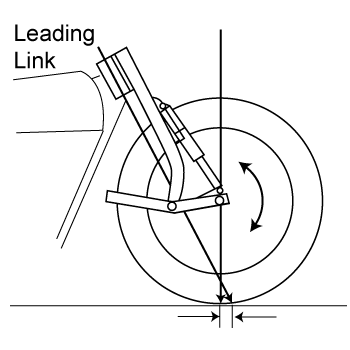 Here’s the problem. – – When you ride it forward against a bump the movable part of the fork, whether it is a male or female slider, is violently shoved straight back towards the motorcycle, and only after that happens does it start to slide upward on or in its tubes that are attached to the handlebars. Therefore you have one set of tubes prying against the other set of tubes as they try to slide in or on each other. No matter what is done to make them more slippery there is no way those basic facts of mechanical action can be changed.
Here’s the problem. – – When you ride it forward against a bump the movable part of the fork, whether it is a male or female slider, is violently shoved straight back towards the motorcycle, and only after that happens does it start to slide upward on or in its tubes that are attached to the handlebars. Therefore you have one set of tubes prying against the other set of tubes as they try to slide in or on each other. No matter what is done to make them more slippery there is no way those basic facts of mechanical action can be changed.
Even though the telescopic fork looks cool and simple and the effect is not noticed much when you’re sitting still and working your beautiful smooth front fork up and down, it does not have the same effect when you’re riding the bike and run into a bump.
That is why it takes 12 or 14 inches of up-and-down travel to get a good ride over unimproved terrain with telescopic forks.
There is absolutely nothing wrong with the shock spring units being made to telescope, it is simply that they have to be attached in such a way that impacts do not hit them directly and put them in any kind of a bind.
The answer of course is to use some kind of a hinged unit that separates the impact from the shock spring unit just like on the modern car. There have been many types of hinged front suspensions used on motorcycle forks. In fact one of the first multi-cylinder motorcycles had one used on it in 1895.
In one form or another leading or trailing link suspensions, as they are called, have been used on one model or another by most motorcycle manufacturers. Up until now these link type suspensions have been slightly heavier than a telescopic fork. Now titanium can be used in their manufacture and affect a 20% weight savings, finally making them completely practical, and perhaps slightly lighter than equivalent telescopic forks. So 121 years later technology has finally caught up with the design and they are practical for top-of-the-line motorcycles.
The practical results of changing over to a leading link design are;
1. No suspension binding either on impact or braking.
2. Better and safer braking because the front of the bike doesn’t dive during braking thereby taking weight off the rear wheel.
3. A much smoother ride needing only one-half of the travel because binding doesn’t compromise shock action.
4. Much longer life out of spring shock units.
5. Because of the way the impacts are absorbed there is less stress on the frame of the motorcycle allowing for overall lighter weight and longer service life.
6. A lower seat height with way better comfort and safety. It usually only takes one good ride to make you happy you made the leading link suspension choice.
7. In essence the leading link fork has an action similar to that used on today’s supercars and they are constantly being tested at speeds of over 200 mph.
Is there a downside to using the leading link type front fork? Yes there is, you’ll have to get used to the fork looking a little bit different.
I’ve personally raced several thousands of off-highway miles on leading link front fork equipped motorcycles and I have been able to perform well above my skill level because of their forgiving nature.
Herb Uhl
Feet on the Ground at Stops
As you may know, the crossover segment in the auto industry is the fastest-growing segment of their business. These cars have a little more ground clearance, all-wheel-drive usually and better visibility so they are not limited to driving on highways.
The motorcycle industry also has such a segment and they are called adventure bikes. They can be ridden on the streets, highways and almost anywhere else regardless of roads or terrain. Currently, four of the major companies are building some form of adventure bike and most of the rest are building something similar but they are not there yet.
In riding motorcycles, however, you can’t just slide the seat back and forth to fit different size bodies. The motorcycles actually have to be designed for different general leg length (inseam) so the riders can set both feet on the ground when the motorcycle is not in motion.
Problem: Because suspension technology has not progressed with the rest of the motorcycle technology the only way to currently get a smooth ride over uneven terrain is to have 12 inches to 14 inches of suspension travel on a telescopic type front fork. Thus if you intend to get a smooth ride you must have a seat height from the ground that only more or less fits about 40% of the potential motorcycle riders. Those riders must have an inseam length of 34 inches or more to safely touch the ground with both feet.
Conclusion: It is absurd that an entire industry would only cater to 40% of their available customers. It’s as if the manufacturers had a meeting somewhere and decided that all motorcycle riders have a 34 inch or longer inseam, so that’s all we’re going to build. I guess they decided anyone with less than a 34-inch inseam must be a child so we will make some basic beginner models for them and if any short adults want to ride they can stand on a stool to mount the bike or ride a children’s bike. The problem with using a stool to mount the bike is how do you have the stool at a stop light when it turns red?
There is an exception: The cruiser models. The way they made them sit lower was to take away suspension travel, rather than re-engineer the suspension to give them a good ride. One of them has just over 1 ½ inches of movement on their rear suspension rather than the 12 inches to 14 inches of movement on the best off-road bikes. As you can easily see the cruisers need roads almost as smooth as a tabletop to be able to ride them comfortably. How many roads like that are there? So the result is a 27-inch inseam cruiser rider can’t explore like a 34-inch inseam person can on an adventure bike.
Now modern materials and systems are available to get the same kind of compliance and a smooth ride with only 6 inches or 7 inches of travel.
I simply propose a complete line of smaller adult motorcycles from adventure bikes clear down to the cruisers be designed around this new technology to fit the other approximately 60% of the population. I see no reason why cruisers should have to ride like farm equipment or adventure bikes should require a ladder for the majority of people to climb on board.
Most of the rest of today’s motorcycle technology will need very little modification to satisfy these many new fans.
Herb Uhl
Herco Engineering Boise Idaho
“It’s a modern Sportsman’s best friend all the way!”
 says Idaho sportsman, “Never, never… will I go hunting without my new Trail ’50’. Recently I packed out two strapping deer from Idaho’s toughest timberland and witnessed two more hunters bringing in four more – also on Trail ’50’s (one of them was a 5-point 250 lb, trophy buck). I was able to scout ten times as much hunting area as on foot, also used my ’50’ for hauling water, dragging firewood logs, and general around-camp errands.
says Idaho sportsman, “Never, never… will I go hunting without my new Trail ’50’. Recently I packed out two strapping deer from Idaho’s toughest timberland and witnessed two more hunters bringing in four more – also on Trail ’50’s (one of them was a 5-point 250 lb, trophy buck). I was able to scout ten times as much hunting area as on foot, also used my ’50’ for hauling water, dragging firewood logs, and general around-camp errands.
“This year’s hunting was the best yet… thanks mainly to a little critter called a Honda Trail ’50’!”
Herb Uhl, President
Herco Engineering Co.
Boise, Idaho
Mr. Uhl’s enthusiasm is typical of the many hundreds of outdoorsmen who have purchased and hunted with a Honda Trail “50”.
Trail “50”s are sold in America by the American Honda MotorCo., Inc.

Evel Knievel Snake River Jump September 8, 1974
Smaller Adult Motorcycles: Long Awaited New Market Segment
 Smaller Adult Motorcycles: Long Awaited New Market Segment
Smaller Adult Motorcycles: Long Awaited New Market Segment
By Herb Uhl
Print List Price: $7.00
Kindle Price: $2.99
Save $4.01 (57%)
In Smaller Adult Motorcycles: Long Awaited New Market Segment, Herb Uhl presents a compelling case for a neglected motorcycle industry segment that could double global motorcycle sales. Uhl, known for pioneering the ATV market segment with the invention of the Honda Trail 50, leverages his extensive experience and innovative mindset to highlight the untapped potential of smaller adult motorcycles.
Identifying the Market Gap
Uhl meticulously identifies a significant oversight in the current motorcycle market: the absence of a full line of quality bikes designed for individuals with an inseam of 29 inches or less, a demographic that includes most women and men of shorter stature. This segment, estimated to encompass around 60% of the population, represents a substantial portion of potential motorcycle buyers who are currently underserved.
A Vision for the Future
With a visionary approach, Uhl outlines the necessary steps to capitalize on this market opportunity. He argues that creating upscale motorcycles tailored to the ergonomic needs of shorter riders can attract a wealthy clientele eager to invest in high-quality, well-fitting bikes. This new segment would not only cater to the practical needs of these riders but also appeal to their desire for stylish and sophisticated transportation options.
Statistical Evidence and Market Demand
Uhl bolsters his argument with recent statistics, revealing that 18,550 people in the USA searched for smaller motorcycles in the past month. This data underscores manufacturers’ demand and urgency to address this market gap. Uhl’s detailed analysis and presentation of these figures make a strong case for the profitability and necessity of developing a full line of smaller adult motorcycles.
Engineering and Ergonomics
One of the standout aspects of Uhl’s proposal is his focus on motorcycle ergonomics. He emphasizes the importance of designing bikes that fit the physical dimensions of shorter riders and provides a high-end, comfortable riding experience. This attention to detail ensures that the proposed motorcycles would not be mere scaled-down versions of existing models but thoughtfully engineered vehicles that meet the specific needs of their target audience.
A Call to Action for Manufacturers
Smaller Adult Motorcycles is a call to action and a detailed blueprint for motorcycle manufacturers. Uhl’s expertise and credibility lend significant weight to his proposals, and his clear, well-supported arguments make it difficult for industry leaders to ignore the potential benefits of this new market segment. By highlighting the gap in the market and providing a roadmap to success, Uhl positions himself as a forward-thinking advocate for innovation and inclusivity in the motorcycle industry.
Conclusion
Herb Uhl’s Smaller Adult Motorcycles: Long Awaited New Market Segment is a visionary work addressing a glaring motorcycle industry omission. Uhl’s expertise and ability to present a well-reasoned and data-driven argument make this book an essential read for industry professionals and motorcycle enthusiasts alike. By focusing on the ergonomic needs and preferences of shorter riders, Uhl champions a more inclusive market and unveils a lucrative opportunity for manufacturers to expand their customer base and increase sales. This book is a testament to Uhl’s innovative spirit and enduring impact on the world of motorcycling.
First ATVs Honda Trail 50 Honda 55 Trailmaster
Even by the time the trail 50 transition to the new trail 55, Honda still didn’t understand who the customers were for this ATV. This is a copy of the brochures we developed and had printed to give our customers an idea of the trail and ranch model’s overall usefulness.
Herb Uhl
By 1962 Honda’s literature started to catch up, but they still didn’t understand how useful these machines are on the farm and ranch.
Father & son competing at the same time 1969 six-days 1




